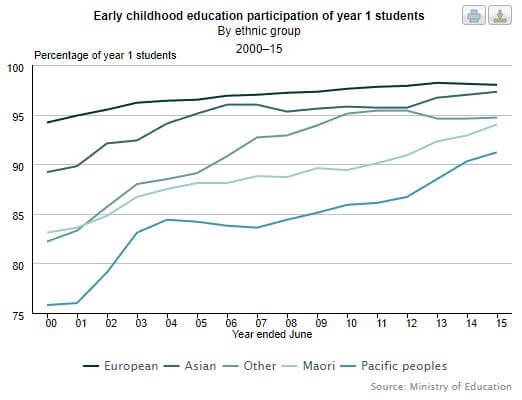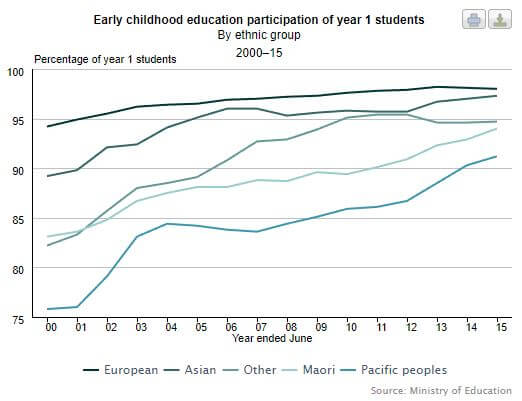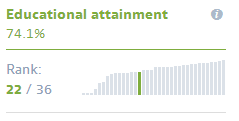Educational attainment is an indirect measure of human capital. A higher level of human capital can improve economic efficiency by providing organisations and individuals with knowledge and skills for economic development.Educational attainment is also important for participation in society.
StatsNZ - Adult Educational Attainment continues to increase

From Stats NZ (2017)
The proportion of adults with at least secondary school qualifications has increased by 16 percent since 1991
- The proportion of adults (aged 25–64 years) with at least secondary school-level qualifications increased steadily from 61.2 percent in 1991 to 77% in 2015.
- The number of adults with a bachelor’s degree or higher rose from 8.3% in 1991 to 29.8% in 2015.
- The proportion of adults (aged 25–64 years) with at least secondary school-level qualifications increased steadily from 62.2% in 1991 to 76.2% in 2013.
- The number of adults with a bachelor’s degree or higher rose from 8.2% in 1991 to 26.1% in 2013.
Access to early childhood education continues to increase

Stats NZ 2017
Since 2000, the gap in participation rates across different ethnic groups has narrowed, and participation rates for all groups have increased
- Participation rates in early childhood education increased for all ethnic groups between 2000 and 2015.
- Participation rates for New Zealand European children are the highest. From 2000 to 2004, rates for both Māori and Pacific ethnic groups increased faster than the rate for New Zealand European students, lessening the difference between the groups.
- From 2000 to 2015, the Pacific and ‘other’ ethnic groups’ participation rate increased the fastest.
Rates of participation in Education for ethnic groups has increased
Stats NZ 2014
Since 2000, the gap in participation rates across different ethnic groups has narrowed, and participation rates for all groups have increased
- Participation rates in early childhood education increased for all ethnic groups between 2000 and 2013.
- Participation rates for New Zealand European children are the highest. From 2000 to 2004, rates for both Māori and Pacific ethnic groups increased faster than the rate for New Zealand European students, lessening the difference between the groups.
- From 2000 to 2013, the Pacific and ‘other’ ethnic groups’ participation rate increased the fastest.
Participation in early childhood education is used as a proxy indicator for equal access to education. Time spent in early childhood education enhances future learning and can help narrow the achievement gap between children from low income families and those from more advantaged families. As early childhood education is not compulsory in New Zealand, different rates of participation among ethnic groups can indicate differing access to education.
International comparison OECD 2007 and 2013
The document: OCED Going for Growth | Indicators of Product Market Regulation data tool states that New Zealand needs to address the high variance in educational outcomes, which reflects a substantial underachievement by some population groups.
OECD 2013 Better Life Index
Quality of Education
The OECD’s Programme for International Student Assessment (PISA) reviews the extent to which students have acquired some of the knowledge and skills that are essential for full participation in modern societies. In 2012, PISA focused on examining students’ reading ability, skills in maths and level in sciences, as research shows that these skills are more reliable predictors of economic and social well-being than the number of years spent in school.
The average student in New Zealand scored 509 in reading literacy, maths and sciences, higher than the OECD average of 497. On average in New-Zealand, girls outperformed boys by 5 points, less than the average OECD gap of 8 points.
Equity of Education
The best-performing school systems manage to provide high-quality education to all students. In New-Zealand, the average difference in results, between the students with the highest socio-economic background and the students with the lowest socio-economic background, is 125 points, higher than the OECD average of 96 points and one of the largest gaps amongst OECD countries. This suggests the school system in New-Zealand does not provide equal access to high-quality education.


